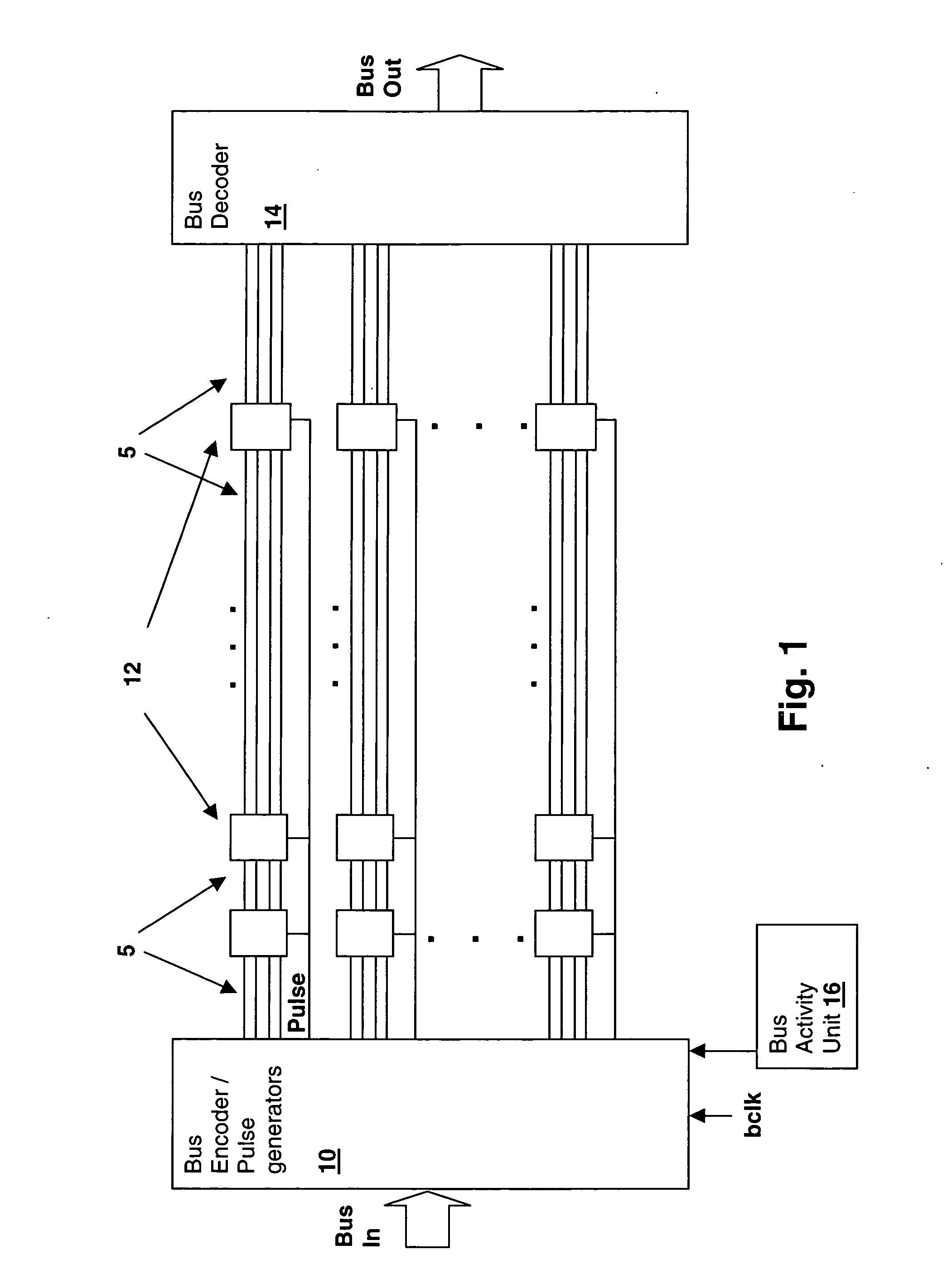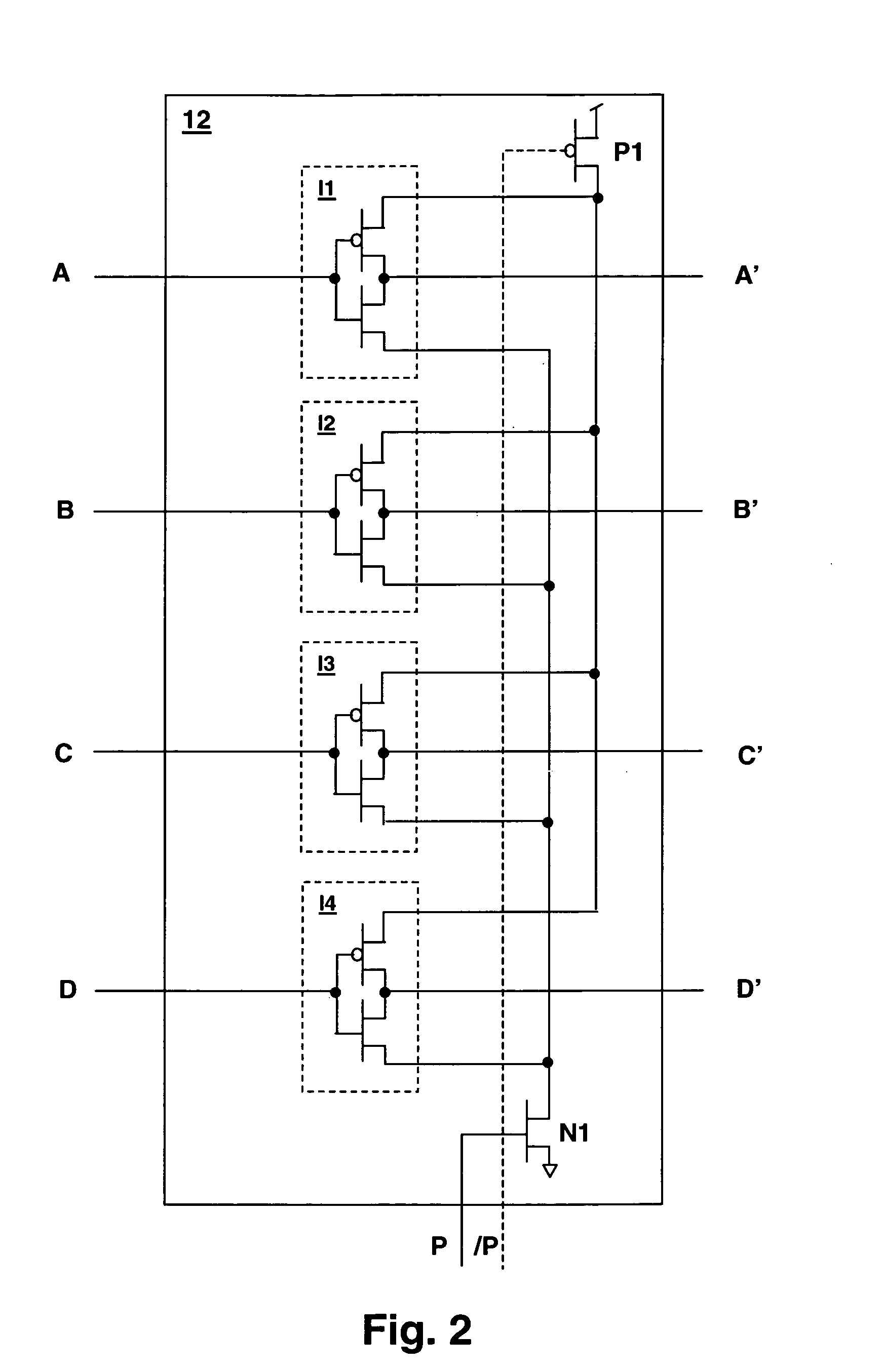Multi-threshold complementary metal-oxide semiconductor (MTCMOS) bus circuit and method for reducing bus power consumption via pulsed standby switching
a complementary metal-oxide semiconductor and bus circuit technology, applied in the field of bus circuits, can solve the problems of increasing power consumption, total system standby power consumption, and affecting the efficiency of the system, so as to reduce the delay slack, simplify the change detection circuit, and prevent the effect of repeater switching
- Summary
- Abstract
- Description
- Claims
- Application Information
AI Technical Summary
Benefits of technology
Problems solved by technology
Method used
Image
Examples
Embodiment Construction
[0022] With reference now to the figures, and in particular with reference to FIG. 1, there is depicted a block diagram of a bus circuit embodying a method and an apparatus in accordance with the present invention. Bus segments 5 are connected by repeater blocks 12, which are groups of buffers or inverters. Repeater blocks 12 include Multi-Threshold Complementary Metal-Oxide Semiconductor (MTCMOS) repeaters, that have reduced power consumption when in a standby mode. Rather than connect the standby control input of repeater blocks 12 to a global static standby mode control signal (or a local static standby signal in power-partitioned environments), the present invention connects a pulsed signal to the standby inputs of each repeater block 12, achieving a fine-grained power consumption control that minimizes the power consumed by bus repeaters 12.
[0023] The pulse signals are generated by pulse generators within Bus Encoder / Pulse Generators block 10, which also includes bus subgroup ...
PUM
 Login to View More
Login to View More Abstract
Description
Claims
Application Information
 Login to View More
Login to View More - R&D
- Intellectual Property
- Life Sciences
- Materials
- Tech Scout
- Unparalleled Data Quality
- Higher Quality Content
- 60% Fewer Hallucinations
Browse by: Latest US Patents, China's latest patents, Technical Efficacy Thesaurus, Application Domain, Technology Topic, Popular Technical Reports.
© 2025 PatSnap. All rights reserved.Legal|Privacy policy|Modern Slavery Act Transparency Statement|Sitemap|About US| Contact US: help@patsnap.com



